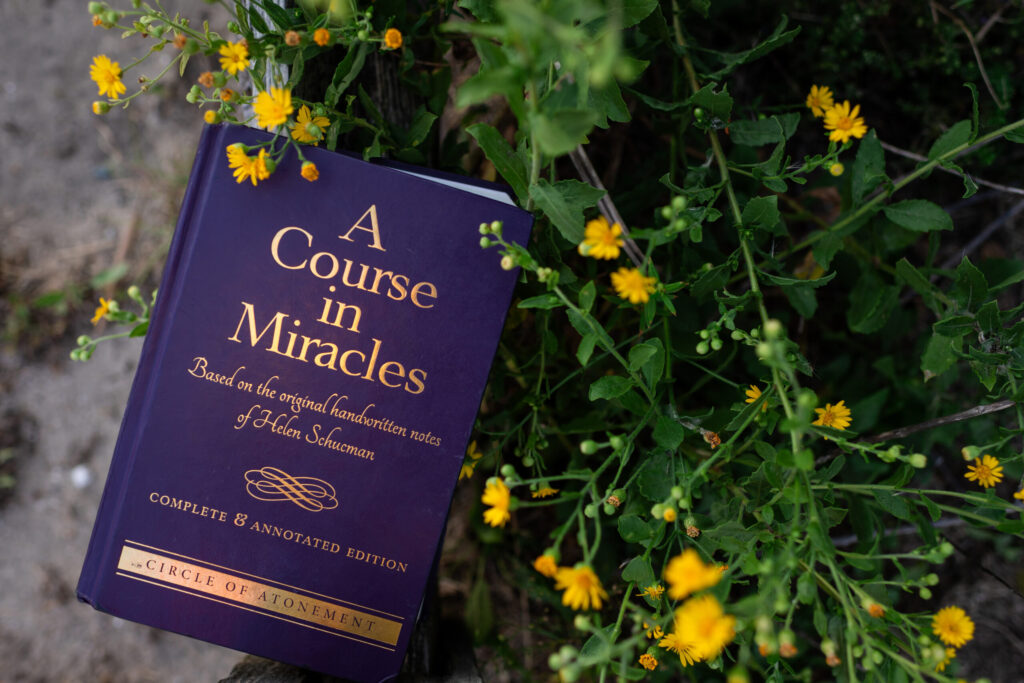Services
How I Perceive You is How I Perceive Me
Explore our offerings designed to nurture spiritual growth and heal your perception.

Miracle-Minded Therapy and Coaching
Add Text

Course Study Group
Add Text

Experiential Workshops
Add Text

God-Centered Meditation Practices
Add Text
The Means Serve the End
“This is a course in miracles.” (CE In.1:1)
“This course is a mind-training course.” (CE T-3.I.1:2)
“It [the Course] is concerned only with Atonement, or the correction of perception. The means of the Atonement is forgiveness.” (CE C-In.1:2-3).

Miracles, mind-training, forgiveness… These are just three components of the path of A Course in Miracles that enable us to reach its goal. They can also be referred to as“means” to an “end.”
The various offerings of the Center for Miraculous Living are rooted in these and other “means.” The “end” we hope to attain and to which the various “means” of the Course are leading, is a kind of inner seeing (a healed perception) through which we perceive the holiness inherent in everyone and everything.
For example, 1) understanding and applying miraculous forgiveness, the central means taught by the Course, 2) allows us to see and experience other people and the world in a very different way (the end to which the means leads). This very different way of seeing/experiencing is often called “true perception” (in contrast to the “false perception” of the ego). In other words, the means of forgiveness serves the end of true perception.
With true perception we still live in the same world as everyone else. But, what we see and experience in that world will be very different indeed. The world seen through true perception represents the attainment of a healed state of mind which causes us to see a world filled with love, that blesses us and everyone, and in which we feel totally safe. We perceive everyone as our holy equal–possessing inestimable worth. The world seen through true perception is so different from the world of most people’s experience that the course calls it the “real world.”
It is very unlikely any one person will reach this kind of perception in a complete and sustained way. It will more than likely occur gradually–perhaps experienceed in glimpses. As a matter of fact, a core teaching of the Course is that all minds are joined and as long as any one of us is hostage to the ego and its false perception, none of us are free of the ego. As long as this is the case, we will need to remain vigilant against the ego’s false perception and vigilant for true perception.
Because all minds are joined, all experiences are shared experiences. This means that liberation from the ego and the undoing of separation are ultimately shared experiences. Individual students can progress toward attainment of true perception or greatly improve their forgiveness skills. However, true and final awakening is collective. In other words, students of the Course are not “out for themselves” or on an individual heroic quest to attain enlightenment. If they are, they are misunderstanding the Course’s path.
Some words we could use to describe this central idea in the Course include:
“Together” “Mutual” “Shared” “Collective“
I am not aware of any religion, spiritual path, or philosophy that has a system of thought and practice even close to that of the Course. For the Course, the cause of suffering, the undoing of suffering, and our awakening to the truth of who we are–one with God and one another in a state of eternal, infinite, and all-encompassing love–are shared experiences. They are:
- A collective (mutual, shared) experience of suffering,
- A collective (mutual, shared) experience of the undoing of suffering, and
- A collective (mutual, shared) experience of awakening.

Below you will find a list of other means to an end–other components of the path–that the Course instructs us to use to achieve its goal. Besides true perception, other names for this goal are: the “real world,” “Christ’s Vision,” and the “happy dream,”–all referring to a way of seeing that is the highest we can attain in this material world, in which we perceive holiness in everyone and everything.
I’m sure there are some I missed in my search, but the list is representative of the main components of the path of the Course. Those familiar with the teachings of the Course will see sameness in this list where others might see differences. Once we have a better grasp of their meaning, we will understand how each of them works together–leading us to a new way of seeing.
Means to an End…
- “miracles”
- “mind-training”
- “the practical application of ideas”
- “reversal of thought”
- “learning what you are”
- “knowing yourself”
- “the correction of perception”
- “love”
- “a universal experience”
- “Atonement”
- “forgiveness”
In the same way that a facet or side of a diamond is simply a different angle from which to perceive the diamond’s beauty, we can imagine each of the above as a facet, component, factor, or aspect of the means leading us to a totally new way of seeing–from which we will, collectively, experience the ultimate and inevitable end–the undoing of what never was (separation & suffering) and our awakening to what eternally is (perfect oneness & love).
It is faithful and consistent use of these means that guarantee our success on this path.
Experience “the correction of perception” [CE C-In.1:2].
Discover transformative experiences that inspire spiritual breakthroughs—sign up today to begin your miraculous journey.
